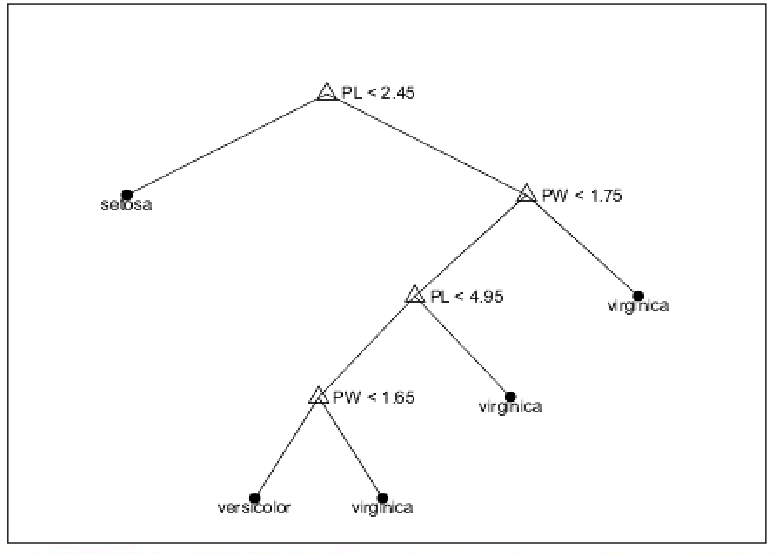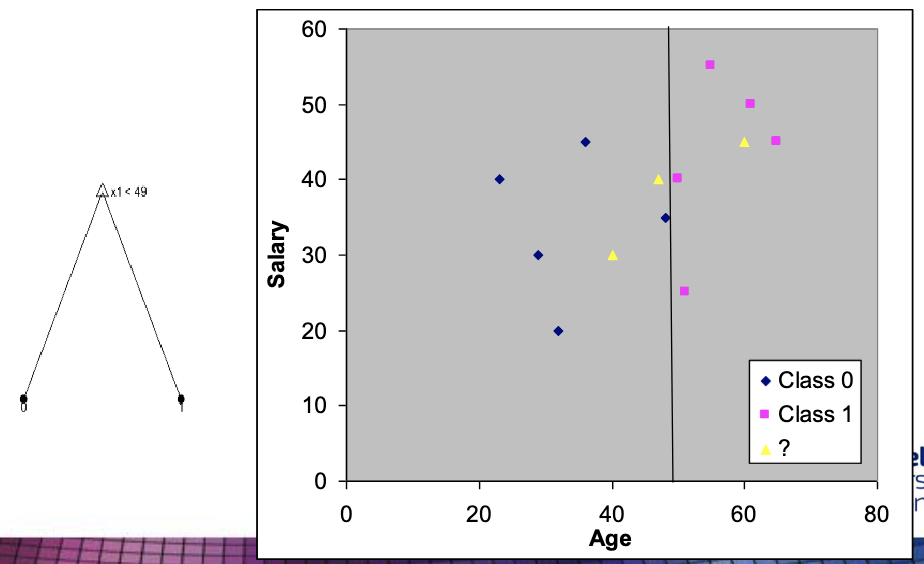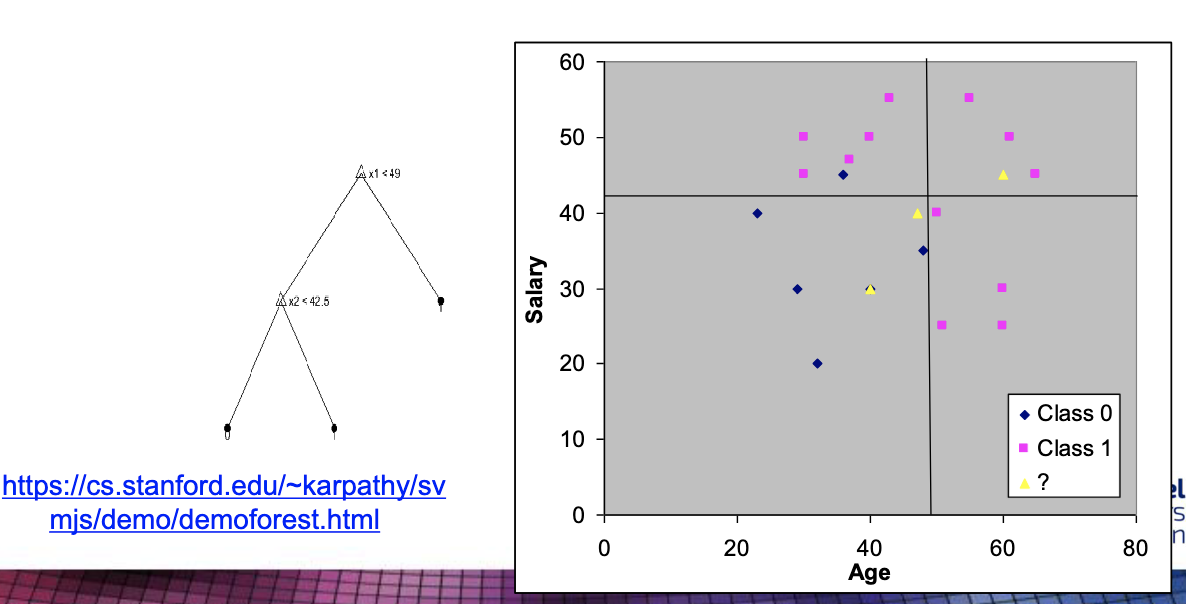- Very popular.
- Nodes represent decisions, arcs represent possible answers, and terminal nodes represent classification.
Example from Iris data:

Classifying with a Decision Tree
- Traverse the tree starting at the root node.
- At each decision node follow the appropriate branch according to the case that you are classifying.
- Repeat until you reach a leaf node.
- Classify according to the label at the leaf node.
Building a Decision Tree
Building a decision tree involves repeatedly splitting nodes until all elements belong to one class.
- Using the example data we used before:

What happens if we add new data?

Demo here.
- Often known as rule induction.
- Nodes are repeatedly split until all elements represented belong to one class.
- Nodes then become terminal nodes.
- Deciding which nodes to split next as well as the evaluation function used to split it depends on the algorithm.
Iterative Dichotomiser 3 Algorithm
ID3(examples, target_classes):
Create root node, root
If all examples are pos. then return single node with label +
If all examples are neg. then return single node with label -
Otherwise
a = attribute that best classifies examples
Set the decision attribute for root to a
For all values of a, v_i
add a new node corresponding to a = v_i
Set examples_v_i = all cases in examples where a = v_i
If examples_v_i is empty Then add a leaf node labelled with most
common value of target in examples
Else Call ID3(examples_v_i, target_classes)
End For
End
Return root
- How do we decide which attribute best classifies the examples?
- We can use the entropy function:
- Where: is a class, is the proportion of cases that take on the class .
- ID3 uses information gain which is the expected reduction in entropy.
- We can use the entropy function:
cs3002-supervised-learning-entropy
Pruning Decision Trees
- Simpler models are preferred.
- Known as “Occam’s razor”.
- Prevents overfitting.
- Tree pruning can be performed:
- Goes through each decision node.
- Considers converting it into a leaf node.
- If this does not reduce classification accuracy, then the pruning is carried out.